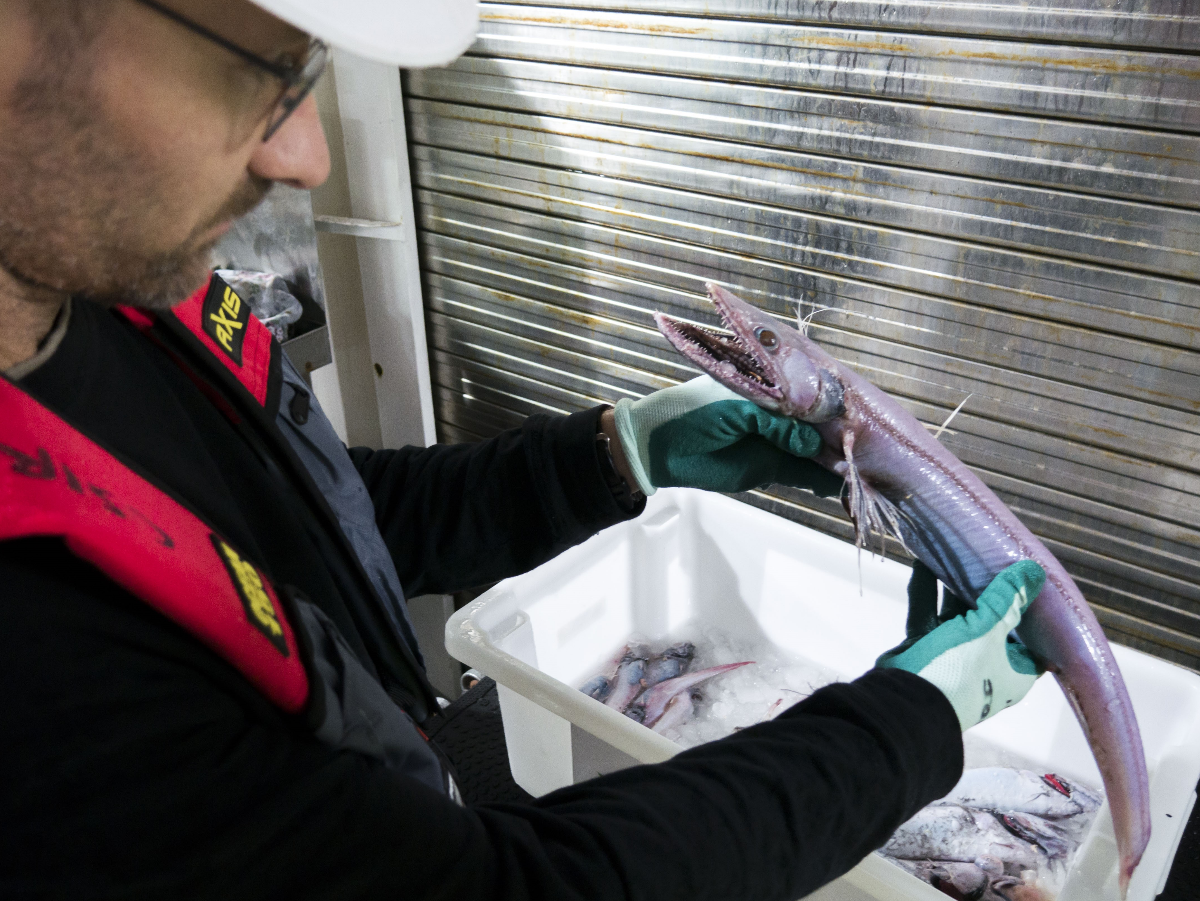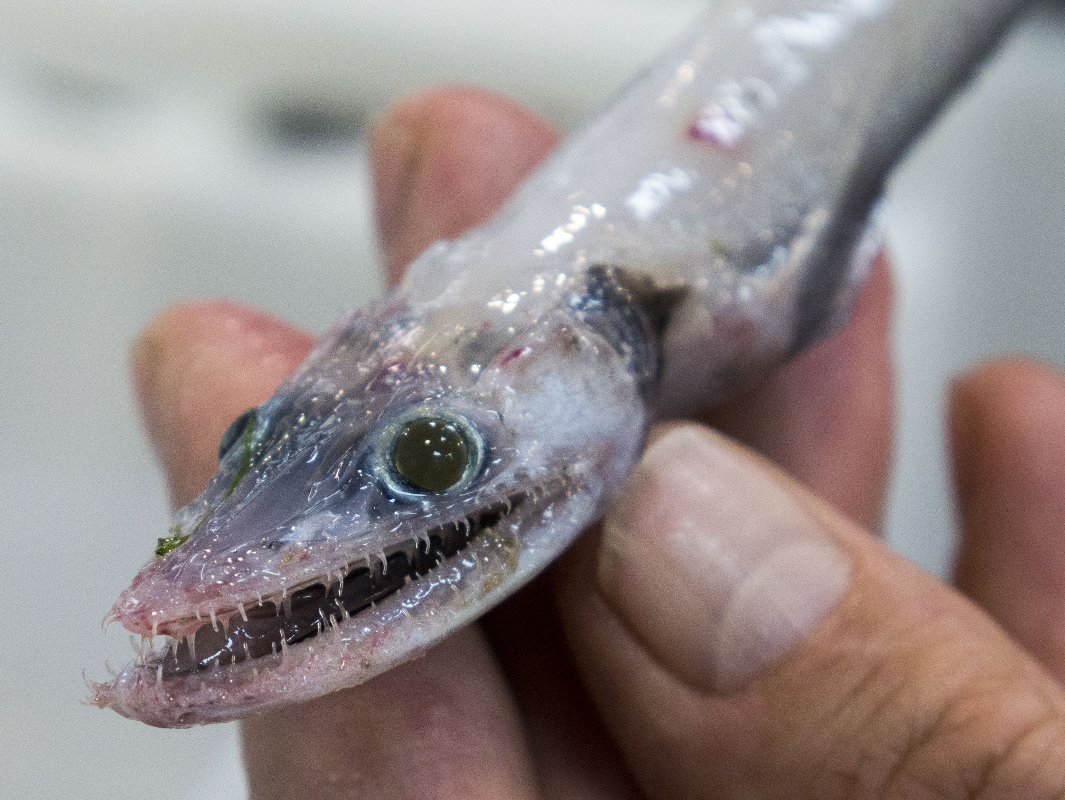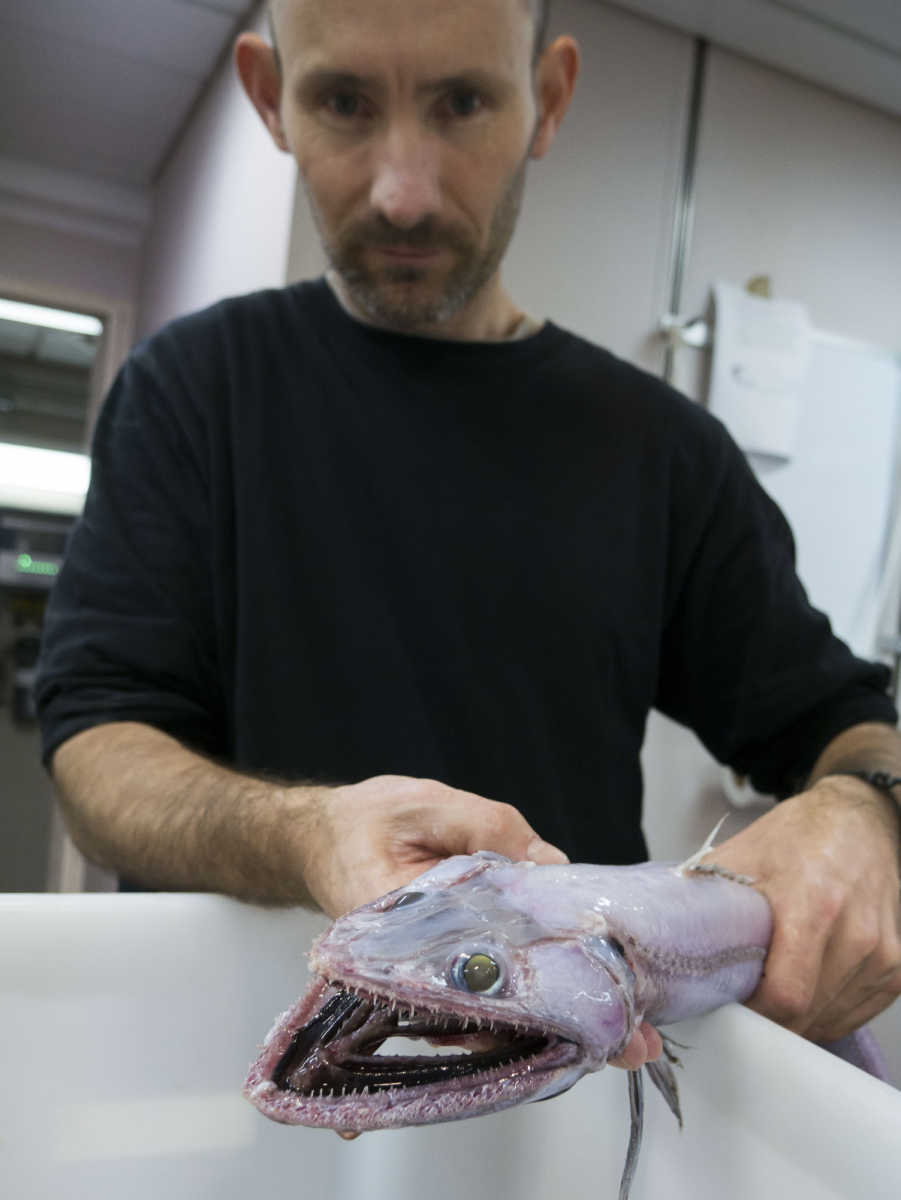June 4, 2017

 Day 21: Asher Flatt, onboard communicator
Day 21: Asher Flatt, onboard communicator
There are still monsters in the deep dark places of the world, at least there are if you're an unsuspecting deep-sea fish. One of the many things lying in wait to eat you is the deep-sea lizard fish (Bathysaurus ferox).
This terrifying terror of the deep is largely made up of a mouth and hinged teeth, so once it has you in its jaws there is no escape: the more you struggle the further into its mouth you go.
Being the dominant predator of the depths isn't easy though: at depths of 1000–2500 metres there is very little food, so lizard fish are few are far between to maximise scarce resources.
And love can be even harder to find in the deep than a meal, a struggle that has nudged the lizard fish down the evolutionary path of a hermaphrodite. They have both male and female reproductive organs, so whatever other Bathysaurus ferox they come across will be Mr right and Miss right. How could you not love a face like that!
John Pogonoski of the CSIRO Australian National Fish Collection recognised this fearsome predator as soon as he removed it from the beam trawl on the RV Investigator.
“I noticed the long dorsal fin base characteristic of Bathysaurus ferox (the only other species in the genus, Bathysaurus mollis, has a short dorsal fin base and a very small second dorsal fin near the tail)," John says. "The large eyes and teeth are classical features of an ambush predator.”


- Log in to post comments
